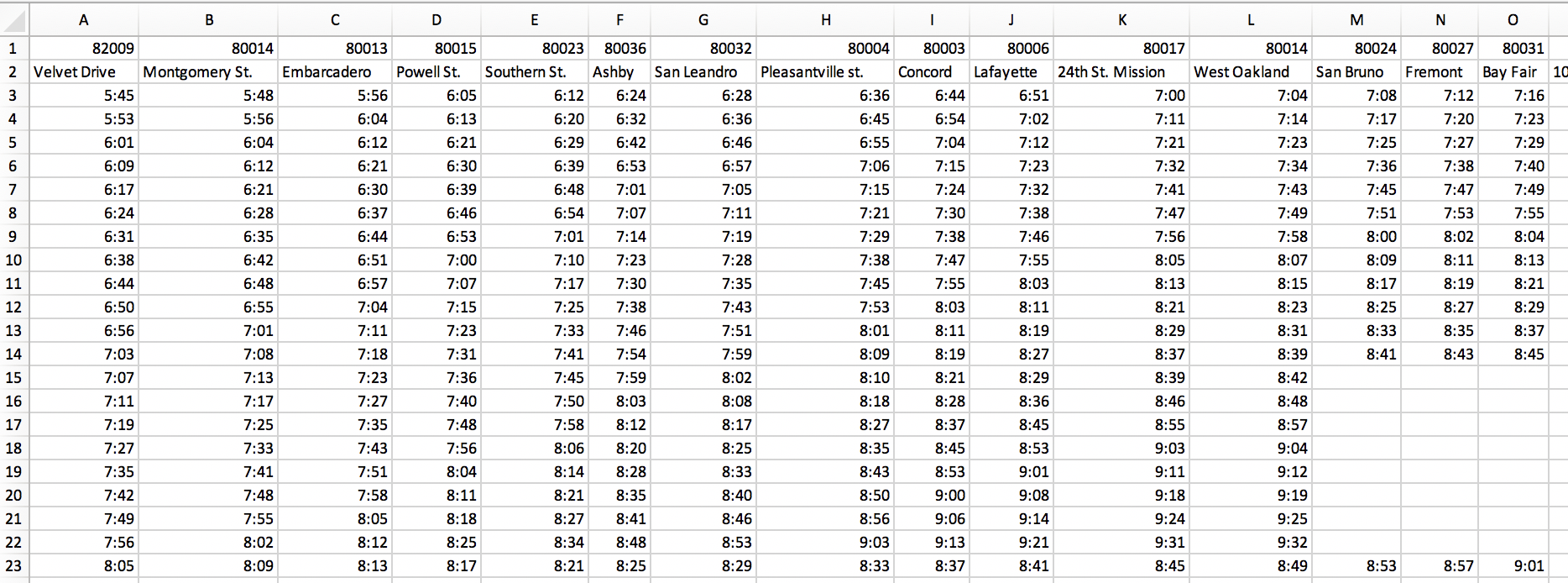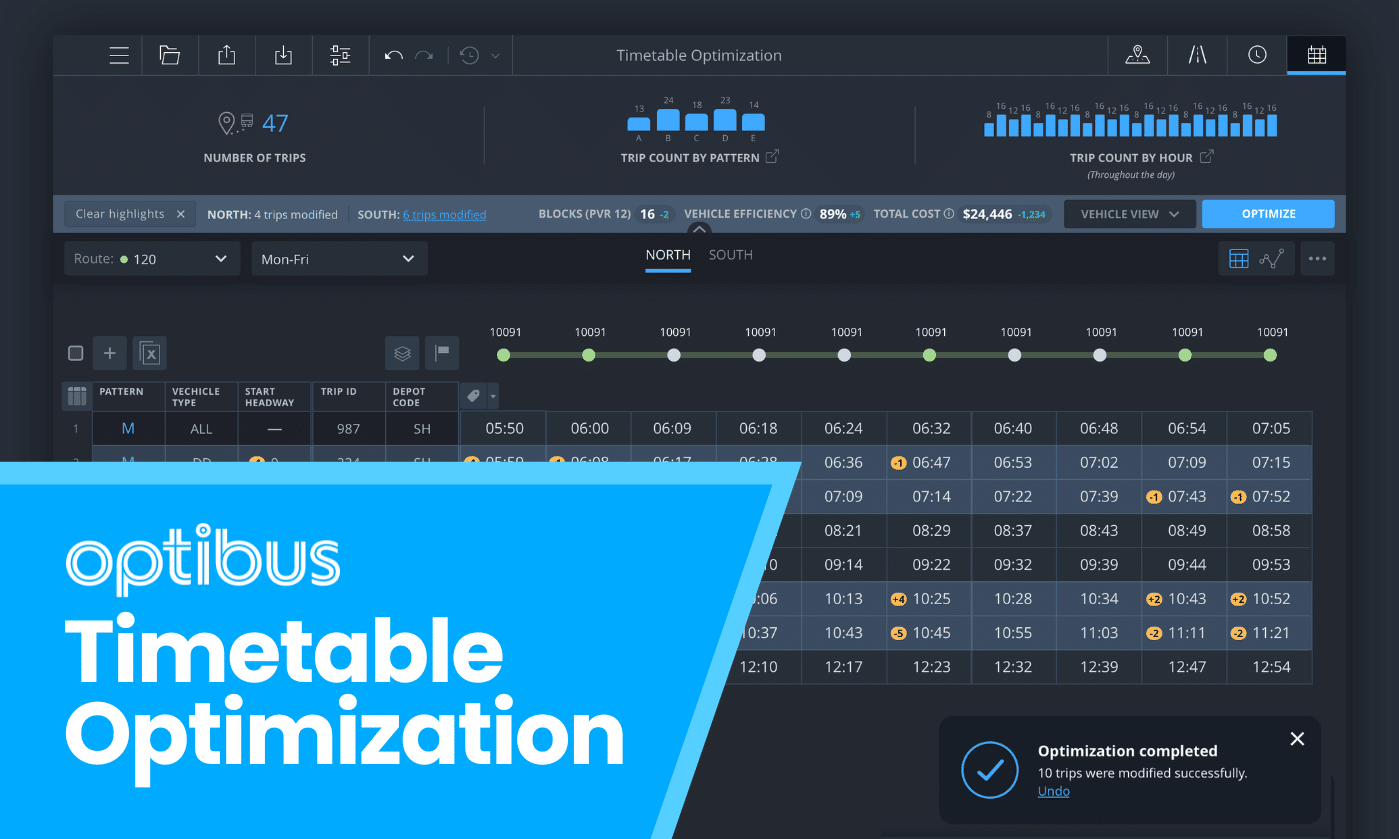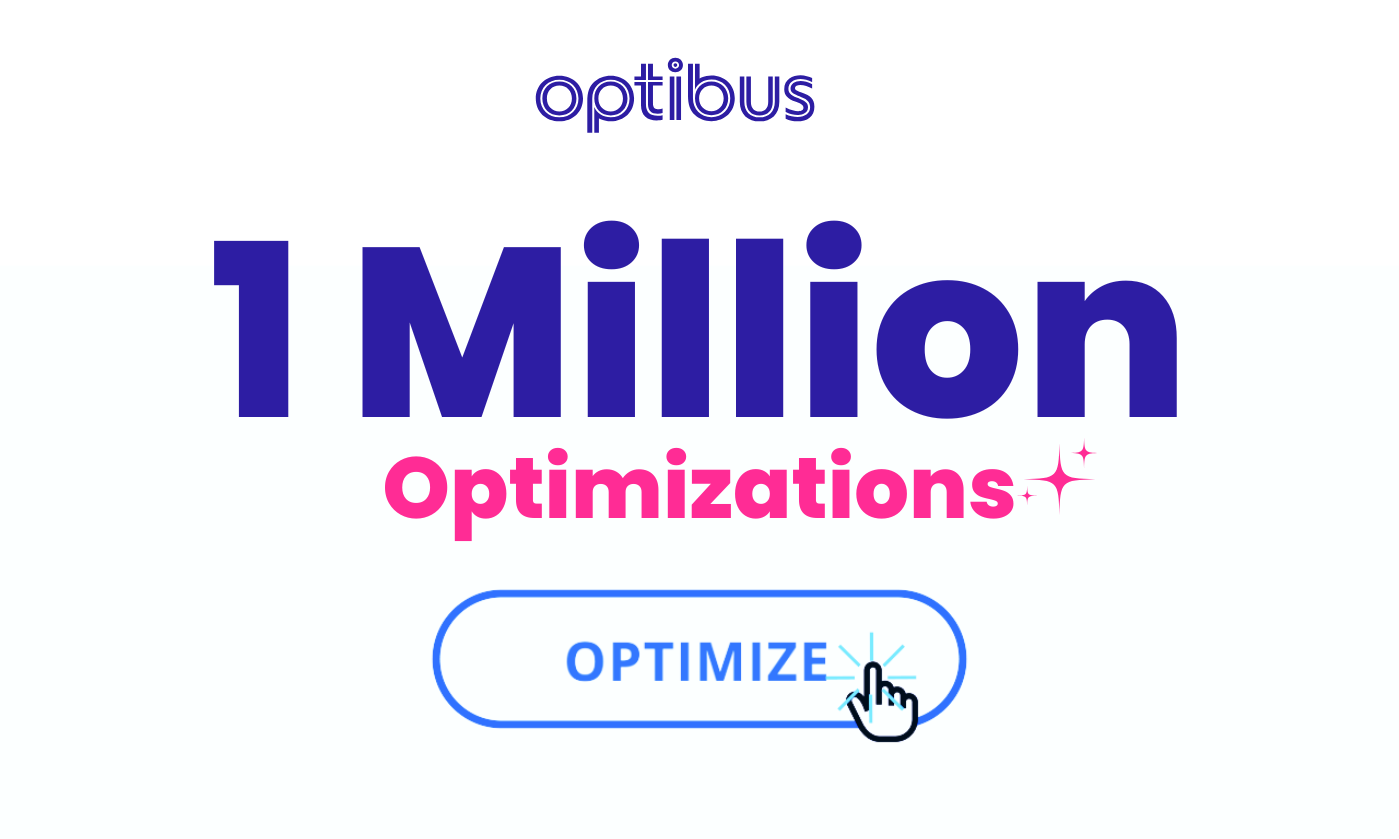Why timetables?
Timetables are the backbone of any mass transit service – or really, timeplans – the aggregate of timetables and routes. They are the underlying service commitment – when and where should transit go, where to stop (or not, for express lines), and where service is measured (time points to measure punctuality). Generating detailed timetables with variations of service (for special days, events, routes) is one of the more time consuming activities for schedulers. It doesn’t only take time – it has to be right. Timetable issues can cascade throughout the scheduling process and force re-work of schedules and plans. [Additionally, timetables that aren’t feasible in the real world (i.e. are defined with begin and end times that don’t allow for on-time service ) have an adverse effect on service quality and efficiency – you can read about our approach to solving it with Optibus OnTime here]
Timetables also need to tie-in seamlessly to scheduling and systems that forecast on-time performance.
Optibus Scheduling modules are where the muscle of our advanced technology lies. With timetables we’re addressing the planning phase, covering the entire range of mass transit (and shuttle operation) needs, from schedule development to rostering.
We started focusing on timetables when we saw that getting timetables right could be a huge timesaver for our users, freeing them to work on strategic issues that would make their mass transit operations better. It is true that our scheduling software presented real cost savings to our customers, but working on timetables was time consuming and wrong timetables created scheduling issues. Sometimes timetable work even took 75% of schedulers’ time.
When we first started working on timetables, we spent a lot of time talking with our customers and researching their pain points. We wanted to understand what were the problems they were facing with current available tools. Customers that were using timetable tools had a variety of issues – the tools didn’t integrate with more “downstream” tools, forcing them to import and export files. Other issues were simplistic timetables that didn’t reflect their service complexity, forcing them to perform numerous manual edits. Others were just fatigued by maintaining all of this on spreadsheets.
Today we’re launching a timetable module. The timetable module is the data source for the entire transit data backbone.
Before and After
Before we begin, here is what an excel-based timetable looks like:
Here is the same timetable, in the Optibus platform:
But the timetable isn’t (just) about beauty. It’s about faster results and, more importantly, valid results.
Core principles for the timetable module
Here are the main principles that guided our product thinking around timetables:
- Timetables are time consuming, and therefore our platform should make timetable work efficient and quick. This means automated timetable generation as well as using historical data.
- Building timetables is prone to human errors. That’s why we decided to create a tool that continuously validates the data and makes sure it complies with preferences and any requirements, such as regulations. This is done by pre-defining rules – preferences and constraints, such as minimum and maximum frequencies, terminal capacity constraints and more. The platform then ensures that the timetable is valid with respect to those requirements.
- Understand timetable Key Performance Indicators. In Optibus we always show the business KPIs so that you can see the business impact of the options you’re forming with the software.
- Quality planning requires the ability to precisely define the intricacies of the service. Otherwise, the plan isn’t true to life and scheduling isn’t too. On the scheduling side this means that the ability to define any preference and constraint for optimization is a must. On the planning side it means the ability to define the service, exactly as it is. The ability to uniquely define a set of dates where service is available, and to create different timetables for different service days, special days or a complex mixture of days and times is a major pain point that the Optibus timetable addresses.
1st Principle: Making timetable work quick (& fun)
One of the core ideas behind Optibus is to bring a Software-as-a-Service platform to a world that still uses on-premise software. Apart from this, the main benefit of automation is to be able to quickly and efficiently generate timetables. Ask us for a demo to see more.
Here’s an example of cascading times and headways – giving you an inkling of how easy this is to edit.
Here’s how to edit multiple trips and perform batch operations:
And here’s how to add timebands and travel times between timepoints. See how travel times between regular bus stops are auto generated according to the distances between the stops.
2nd Principle: Schedule Validation & Avoiding Errors
With scheduling, Optibus lets you easily model any type of rule, preference, union agreement, or regulation. The same ability also exists in the new timetable module. The result pinpoints areas where the timetable doesn’t comply with the pre-set preferences and constraints. As a result, rather than discovering timetable planning issues during the scheduling process (a painful realization requiring even more painful re-work) these are automatically highlighted by the system and corrected.
The process is as follows:
- Rules and Preferences: you define the rules per Service ID, route, direction and more. For example, the allowed headway for a pinch point at different time-bands along the day.
- Building the timetable: create the timetable by adding the desired trips to each service ID.
- Automatic Timetable Validation: The system then automatically validates whether the entire timetable complies with the preferences and regulations that you have defined. The Optibus platform pinpoints the parts in the timetable that aren’t compliant with the preferences or where you have some missing data. This allows for quick & easy fixes to the timetable and saves a lot of energy later down the road.
- Building the vehicle and crew schedules based on the timetable: having a schedule that is based on a valid timetable can save you a lot of time and energy, since it saves the re-work of the actual schedule when the timetable is adjusted
3rd Principle: Understand Key Performance Indicators (KPIs)
Another important part of timetables sounds pretty obvious – understand their impact on operational KPIs. The Optibus platform does this automatically, showing, for example, the resulting trip count, by pattern, and by hour. This lets planners immediately see the impact of the timetable they are creating, and to course-correct in case of mistakes. This can save time later on in the scheduling phase, when timetable mistakes are first discovered (there will be less mistakes).
4th Principle: Service IDs matter
Service IDs are at the core of any timetable operation. While some take the approach of simplistic Service IDs – Monday through Friday, Saturday and Sunday, in reality most transit operators use more service IDs to reflect their responses to demand. For instance, sometimes we see different service IDs for different holidays, sports events, school events and more. We need to enable the configuration of these service IDs in the system, so that the timetable will have the right granularity and act as an ultra-accurate input to the scheduling work that is downstream. Otherwise, we will need to do a lot of manual editing.
Summary
Working on timetables in an automated and interactive way can save a lot of effort. The ability to simply express a timetable – the central transit plan – can save energy, but more importantly, it can save a lot of “downstream” work since validated timetables provide a robust beginning to the scheduling process instead of something that requires a lot of back and forth work.
Read our latest articles:
Relief Vehicle Scheduling
MV transportation – Improving Efficiencies
Bus rapid transit systems planning
Electric vehicle optimization








